From Connection to Collaboration: Building Better Business Partnerships
Strong partnerships can transform a small business from a local operation into a thriving, scalable venture. When done right, collaboration brings shared resources, cross-promotion, and innovative problem-solving. But without clear structure, even well-intentioned partnerships can create confusion and conflict.
This guide covers how to collaborate successfully — from structuring agreements to maintaining healthy long-term partnerships — with checklists, examples, and tools to help you start confidently.
TL;DR
-
Good partnerships begin with clear goals, trust, and complementary strengths.
-
Put everything in writing: roles, revenue splits, exit options.
-
Choose a legal structure that protects everyone — often an LLC.
-
Review communication, profit, and performance regularly.
-
Use online tools and resources for contracts, accounting, and planning.
Step 1: Revisit Your Business Structure Before Partnering
Before forming a collaboration, take a step back and review your current business structure. Partnerships change financial responsibilities, risk exposure, and decision-making. If you’re a sole proprietor, it might be time to formalize your business.
A limited liability company (LLC) is a popular choice because it offers personal asset protection while allowing flexible management. It can prevent one partner’s liability from affecting the other’s personal finances.
If you’re exploring your options, compare reputable formation services to ensure the process is done correctly. These services help you file quickly, stay compliant, and avoid expensive attorney fees. You can compare the best LLC service providers to choose one that fits your budget and state requirements.
Step 2: Align Values and Expectations
The best collaborations start with aligned principles, not just complementary products.
Ask:
-
Do you share similar ethics, growth goals, and work styles?
-
Are your brands compatible in tone and audience?
-
What are each partner’s non-negotiables?
Reading resources like Harvard Business Review’s partnership guidelines can help you anticipate conflicts and define clear ground rules early.
Step 3: Build a Partnership Roadmap (How-To Guide)
-
Define the purpose. Clarify the shared goal: new product line, co-marketing, or shared distribution.
-
Set measurable KPIs. Example: “Increase sales by 25% in six months” or “Gain 500 new email subscribers through co-promotion.”
-
Draft a written agreement. Include profit splits, timelines, and exit clauses.
-
Identify decision rights. Who signs contracts? Who manages payroll or client communication?
-
Use collaboration tools. Platforms like Slack keep everyone aligned.
-
Schedule performance reviews. Quarterly check-ins help partners address issues before they escalate.
Step 4: Financial Transparency Checklist
|
Task |
Why It Matters |
Recommended Tool |
|
Separate business bank accounts |
Prevents confusion and simplifies taxes |
|
|
Use shared accounting software |
Improves accountability and reduces disputes |
|
|
Create a partner expense policy |
Ensures clarity on reimbursements and spending |
|
|
Review finances monthly |
Catches inconsistencies early |
Internal meeting or dashboard |
|
Reinvest profits strategically |
Funds future growth without tension |
Financial advisor / CPA |
Step 5: Communication and Conflict Resolution
Open communication prevents resentment. Set a fixed schedule for updates and clarify preferred communication channels. Some partners prefer weekly email summaries; others thrive in daily stand-ups or brief Slack syncs.
If tensions arise, revisit your written agreement and use mediation resources like the American Arbitration Association or local small business development centers (SBA network).
Partnership Success Checklist
? Shared mission and values
? Clear legal structure (LLC or partnership agreement)
? Defined KPIs and review cadence
? Transparent accounting process
? Written dispute-resolution plan
? Regular communication rhythm
? Exit strategy for both parties
FAQ
What’s the best type of agreement for a business partnership?
A partnership agreement or operating agreement (for LLCs) defines roles, capital contributions, and ownership percentages.
How do I protect myself if a partner makes a financial mistake?
Forming an LLC helps separate personal and business assets. You can also use indemnity clauses in contracts to prevent one partner’s actions from endangering the other.
Should partners share all financial information?
Yes. Transparency builds trust. Use shared bookkeeping tools and keep both partners informed about expenses, invoices, and tax obligations.
What’s a reasonable way to end a partnership?
Include an exit plan in your agreement — for example, a buyout clause or mediation requirement. Always document the process to avoid future legal issues.
Glossary
-
LLC (Limited Liability Company): A business structure that protects owners’ personal assets from company debts and lawsuits.
-
KPI (Key Performance Indicator): A measurable value showing progress toward business goals.
-
Operating Agreement: A document outlining ownership, management, and decision-making procedures for an LLC.
-
Profit Split: The agreed-upon percentage distribution of profits between partners.
-
Due Diligence: The process of verifying a potential partner’s background, finances, and reputation before collaborating.
Bonus Spotlight: Tool of the Month – Trello
Trello lets small business partners organize projects with boards, cards, and visual timelines. Its simplicity makes it a favorite for remote teams that need clear accountability. Add integrations for Slack or Google Drive to centralize your workflow.
Conclusion
Collaboration can multiply your growth, but success depends on structure and shared vision. By formalizing your business structure, defining clear expectations, and keeping communication transparent, your partnership can flourish for years.
Building partnerships isn’t about luck — it’s about planning, clarity, and mutual respect. Start with structure, protect your business with the right legal setup, and keep your goals aligned as you grow together.
Join the Paradise Ridge Chamber of Commerce and become part of a vibrant community dedicated to local pride, professional growth, and civic progress!

